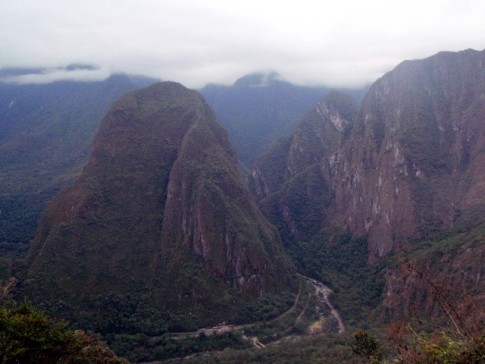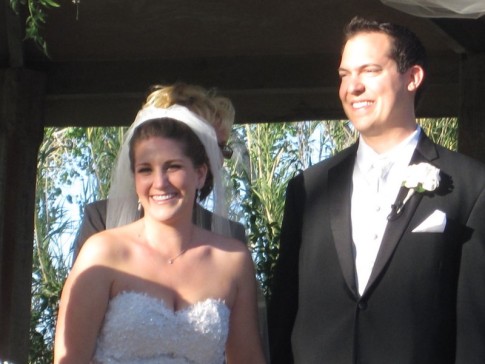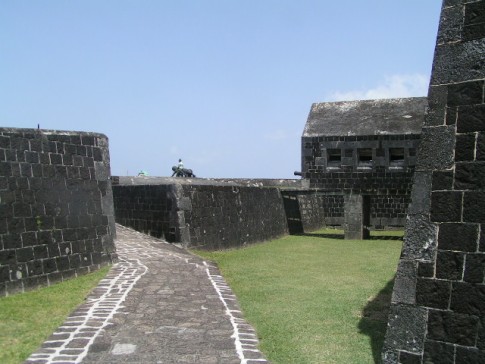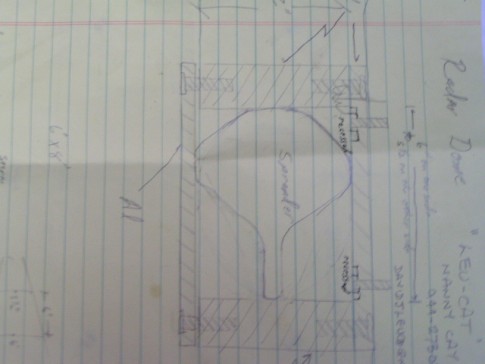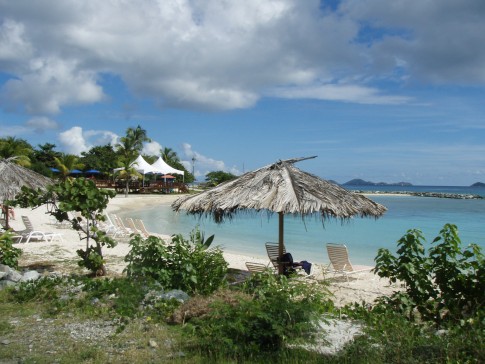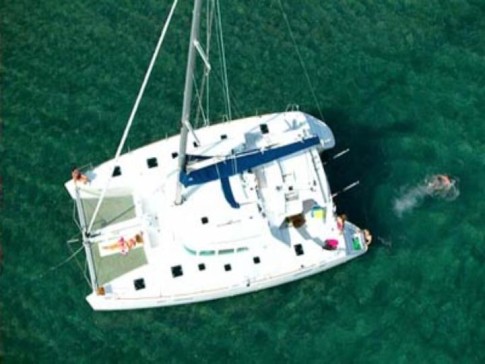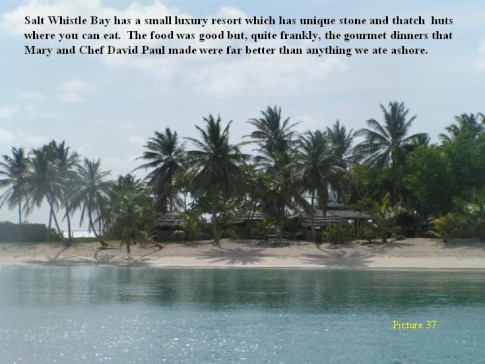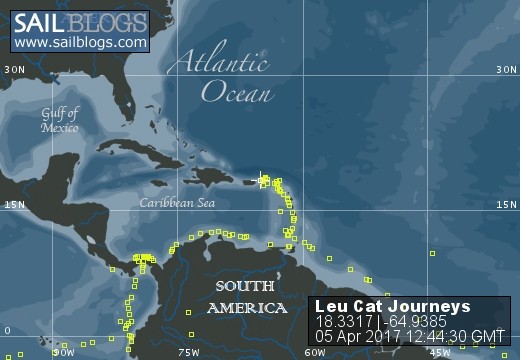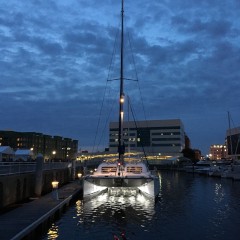
LeuCat Adventures
Join us in sharing our adventures as we sail around the world. NEW!!************************************************************************* GET A COPY OF OUR TECHNO-TIPS DOCUMENTS--JUST CLICK ON THEM UNDER THE "FAVORITES" HEADING ON THE RIGHT
24 September 2017
30 August 2017 | San Francisco, CA
07 July 2017
02 July 2017 | Simpson Bay Marina, Cole Bay, Sint Maarten
01 July 2017 | Simpson Bay Marina, Cole Bay, Sint Maarten
30 June 2017 | Simpson Bay Marina, Cole Bay, Sint Maarten
29 June 2017 | Simpson Bay Marina, Cole Bay, Sint Maarten
28 June 2017 | Simpson Bay Marina, Cole Bay, Sint Maarten
27 June 2017 | Simpson Bay Marina, Cole Bay, Sint Maarten
26 June 2017 | Simpson Bay Marina, Cole Bay, Sint Maarten
25 June 2017 | Simpson Bay Marina, Cole Bay, Sint Maarten
24 June 2017
24 June 2017 | Simpson Bay Marina, Cole Bay, Sint Maarten
22 June 2017 | Simpson Bay Marina, Cole Bay, Sint Maarten
21 June 2017 | Simpson Bay Marina, Cole Bay, Sint Maarten
20 June 2017 | Simpson Bay Marina, Cole Bay, Sint Maarten
18 June 2017 | Simpson Bay Marina, Cole Bay, Sint Maarten
17 June 2017 | Simpson Bay Marina, Cole Bay, Sint Maarten
16 June 2017 | Simpson Bay Marina, Cole Bay, Sint Maarten
15 June 2017 | Simpson Bay Marina, Cole Bay, Sint Maarten
Year 5 Day 25: A Brief History Of Australia- Part 3
25 February 2012 | Bundaberg Port Marina, AU
Dave/Overcast With Periods Of Rain
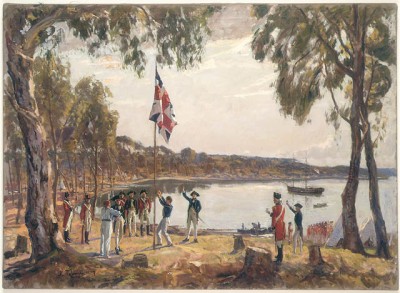
The weather continues to be crappy with overcast skies and periods of rain, varying from intense downpours to light spits of rain. Between the periods of rain, the winds would die down some so Mary Margaret and I would run out and work on reordering the batten cars and replacing one of the lazy jacks. Wrestling the mainsail whenever the winds would come up was a challenge but, with patience, we prevailed.
I will continue with my brief history of Australia.
The Colonization of Australia: 1787 To 1850s
Most Americans don't realize that up until the Revolutionary War and the American Colonies' break from the English Crown Britain was sending over its convicts, mostly to the states of Maryland and Virginia. Life was hard for commoners in 18th century England and punishments for even minor crimes were severe. In England you could be hanged for more than 200 different offences. However, an alternative to hanging or serving long prison sentences was being sent to the American colonies. The British used North America as a penal colony through a system of indentured servitude. Convicts would be transported by merchants and auctioned off to plantation owners upon arrival in the colonies. It is estimated that some 50,000 British convicts were sent to colonial America, representing perhaps one-quarter of all British emigrants during the 18th century.
Once Britain lost its access to its penal colonies in the American Colonies, Joseph Banks (the naturalist on Cook's 1770 voyage to the South Pacific and Australia) in 1779 suggested that Britain could solve its growing overcrowding prison problems by transporting convicts to New South Wales. In 1787, the First Fleet set sail for Botany Bay, comprising 11 ships and 750 male and female convicts. It arrived on 26 January 1788, but soon moved north to Sydney Cove, where there was better land and water. For the new arrivals, New South Wales was a hot, harsh and horrible place, and the threat of starvation hung over the colony for many years. To cope with their struggle against nature and an oppressive government, these new Australians forged a culture that became the basis of the legend of the 'Aussie battler'. January 26 is now celebrated as Australia Day.
At first convicts worked on government land for provisions but starting in 1793 those who behaved well were freed and given grants of land. Also the first free settlers arrived in 1793. Although the initial hopes of growing flax in Australia came to nothing, whales were successfully hunted in the Pacific and seals were hunted in the Bass Strait.
Relatively few new people were sent to Australia during the long wars with France from 1793 to 1815 because the war at sea made that difficult. Nevertheless the Australian colony continued to grow. However, all did not go smoothly in Australia at the beginning of the 19th century. In March 1804 some Irish convicts led by Philip Cunningham took part in a rebellion at Castle Hill. On 4 March they captured a convict station at Parramatta. The next day they fought a 'battle' with government soldiers. As a result the rebellion quickly collapsed and the ringleaders were hanged.
A second rebellion, called the rum rebellion, occurred in 1808. William Bligh, famous captain of the Bounty, was made governor in 1806. At that time rum was used as currency in Australia. Bligh forbade this. However on 26 January 1808 a group of soldiers led by Major George Johnston arrested Bligh. He was held prisoner for over a year until he finally agreed to leave Australia. However, soon after he set sail Bligh decided to return. In 1809 the British government decided to replace Bligh and in 1810 he was succeeded by Colonel Macquarie.
From the early part of the 1800's to mid century, the eastern, southern and western seaward edges of the continent were explored and settlements were established. Brisbane was founded in 1825. Western Australia and the City of Perth were founded in 1829. Berrima was founded in 1829. Bathurst and Goulburn followed it in 1833. In 1834 John Batman decided the site of Melbourne was a good place to found a settlement. In 1835 he made a treaty with the Indigenous Australians in which he gave them trade goods for land. However the treaty was not recognized by the British government, which disregarded it. Nevertheless the city of Melbourne was laid out on the land in a grid pattern.
In 1836 another colony was founded at Port Adelaide, which grew into South Australia. The city of Adelaide was planned by Colonel William Light (1786-1839) the first Surveyor General of Australia.
Transportation on convicts to New South Wales ended in 1840. Transportation of convicts other locations in Australia ended completely in 1868. Meanwhile the system of granting land to people ended in 1831. From then on land in Australia was sold.
In the 1850s gold was discovered in a number locations and this discovery is what permanently changed the colony. The huge influx of migrants from across the globe and several large gold finds boosted the economy. Between 1851 and 1861 the population of Australia rose from 430,000 to 1.2 million. In 1861 Melbourne was the largest city with a population of about 125,000. Sydney had about 100,000 people.
During this rapid period of growth and a lust for gold, the 1854 Eureka Rebellion occurred. The government had introduced licenses for gold miners. This was much resented especially when the price was raised and the police carried out 'hunts' to find license dodgers. The miners claimed the authorities were corrupt and unfair. Resentment grew and on 17 October 1854 the Eureka Hotel was burned. Then on 29 November 1854 miners held a meeting under a new flag, the 'Eureka Flag'. They were led by an Irishman named Peter Lalor (1827-1889). The men swore an oath to defend their rights and liberties. They demanded not just an end to the licenses but also political reform. On 2 December 1854 they erected a stockade at Eureka Lead.
During the early morning of 3 December 1854 soldiers and police attacked the stockade. The exact number of people killed is not known but it was estimated to be about 30. Following the 'battle' 120 men were captured and 13 were sent to trial however all were eventually acquitted. Despite the collapse of the rebellion all the demands of the rebels were met. Licenses were abolished. The Eureka Rebellion entered Australian folklore as a fight for liberty. In 1998 a Eureka Stockade Center opened to commemorate the event.
I will continue with my brief history of Australia.
The Colonization of Australia: 1787 To 1850s
Most Americans don't realize that up until the Revolutionary War and the American Colonies' break from the English Crown Britain was sending over its convicts, mostly to the states of Maryland and Virginia. Life was hard for commoners in 18th century England and punishments for even minor crimes were severe. In England you could be hanged for more than 200 different offences. However, an alternative to hanging or serving long prison sentences was being sent to the American colonies. The British used North America as a penal colony through a system of indentured servitude. Convicts would be transported by merchants and auctioned off to plantation owners upon arrival in the colonies. It is estimated that some 50,000 British convicts were sent to colonial America, representing perhaps one-quarter of all British emigrants during the 18th century.
Once Britain lost its access to its penal colonies in the American Colonies, Joseph Banks (the naturalist on Cook's 1770 voyage to the South Pacific and Australia) in 1779 suggested that Britain could solve its growing overcrowding prison problems by transporting convicts to New South Wales. In 1787, the First Fleet set sail for Botany Bay, comprising 11 ships and 750 male and female convicts. It arrived on 26 January 1788, but soon moved north to Sydney Cove, where there was better land and water. For the new arrivals, New South Wales was a hot, harsh and horrible place, and the threat of starvation hung over the colony for many years. To cope with their struggle against nature and an oppressive government, these new Australians forged a culture that became the basis of the legend of the 'Aussie battler'. January 26 is now celebrated as Australia Day.
At first convicts worked on government land for provisions but starting in 1793 those who behaved well were freed and given grants of land. Also the first free settlers arrived in 1793. Although the initial hopes of growing flax in Australia came to nothing, whales were successfully hunted in the Pacific and seals were hunted in the Bass Strait.
Relatively few new people were sent to Australia during the long wars with France from 1793 to 1815 because the war at sea made that difficult. Nevertheless the Australian colony continued to grow. However, all did not go smoothly in Australia at the beginning of the 19th century. In March 1804 some Irish convicts led by Philip Cunningham took part in a rebellion at Castle Hill. On 4 March they captured a convict station at Parramatta. The next day they fought a 'battle' with government soldiers. As a result the rebellion quickly collapsed and the ringleaders were hanged.
A second rebellion, called the rum rebellion, occurred in 1808. William Bligh, famous captain of the Bounty, was made governor in 1806. At that time rum was used as currency in Australia. Bligh forbade this. However on 26 January 1808 a group of soldiers led by Major George Johnston arrested Bligh. He was held prisoner for over a year until he finally agreed to leave Australia. However, soon after he set sail Bligh decided to return. In 1809 the British government decided to replace Bligh and in 1810 he was succeeded by Colonel Macquarie.
From the early part of the 1800's to mid century, the eastern, southern and western seaward edges of the continent were explored and settlements were established. Brisbane was founded in 1825. Western Australia and the City of Perth were founded in 1829. Berrima was founded in 1829. Bathurst and Goulburn followed it in 1833. In 1834 John Batman decided the site of Melbourne was a good place to found a settlement. In 1835 he made a treaty with the Indigenous Australians in which he gave them trade goods for land. However the treaty was not recognized by the British government, which disregarded it. Nevertheless the city of Melbourne was laid out on the land in a grid pattern.
In 1836 another colony was founded at Port Adelaide, which grew into South Australia. The city of Adelaide was planned by Colonel William Light (1786-1839) the first Surveyor General of Australia.
Transportation on convicts to New South Wales ended in 1840. Transportation of convicts other locations in Australia ended completely in 1868. Meanwhile the system of granting land to people ended in 1831. From then on land in Australia was sold.
In the 1850s gold was discovered in a number locations and this discovery is what permanently changed the colony. The huge influx of migrants from across the globe and several large gold finds boosted the economy. Between 1851 and 1861 the population of Australia rose from 430,000 to 1.2 million. In 1861 Melbourne was the largest city with a population of about 125,000. Sydney had about 100,000 people.
During this rapid period of growth and a lust for gold, the 1854 Eureka Rebellion occurred. The government had introduced licenses for gold miners. This was much resented especially when the price was raised and the police carried out 'hunts' to find license dodgers. The miners claimed the authorities were corrupt and unfair. Resentment grew and on 17 October 1854 the Eureka Hotel was burned. Then on 29 November 1854 miners held a meeting under a new flag, the 'Eureka Flag'. They were led by an Irishman named Peter Lalor (1827-1889). The men swore an oath to defend their rights and liberties. They demanded not just an end to the licenses but also political reform. On 2 December 1854 they erected a stockade at Eureka Lead.
During the early morning of 3 December 1854 soldiers and police attacked the stockade. The exact number of people killed is not known but it was estimated to be about 30. Following the 'battle' 120 men were captured and 13 were sent to trial however all were eventually acquitted. Despite the collapse of the rebellion all the demands of the rebels were met. Licenses were abolished. The Eureka Rebellion entered Australian folklore as a fight for liberty. In 1998 a Eureka Stockade Center opened to commemorate the event.
Comments
| Vessel Name: | Leu Cat |
| Vessel Make/Model: | Lagoon 440 |
| Hailing Port: | Dana Point, CA |
| Crew: | Mary Margaret and Dave Leu |
| About: | Our goals are to spend the next 10 to 15 years cruising around the world and sharing this adventure with family and friends. |
| Extra: | S/V Leu Cat is Lagoon 440 rigged for blue water sailing. It is 44 feet long with a 25 foot beam |
| Social: |
Leu Cat's Photos - (Main)
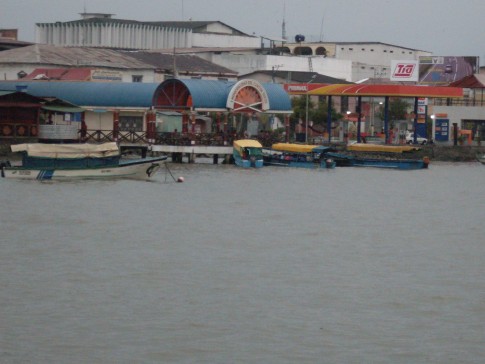 |
Here are some pics that I took while visiting w/ my parents in the Galapagos Islands
22 Photos
Created 29 March 2010
|
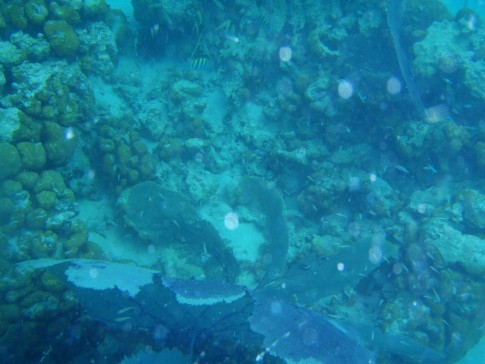 |
Pictures of the sea life in the cut between Little Jost Van Dyke and Green Cay, BVI
30 Photos
Created 17 March 2008
|
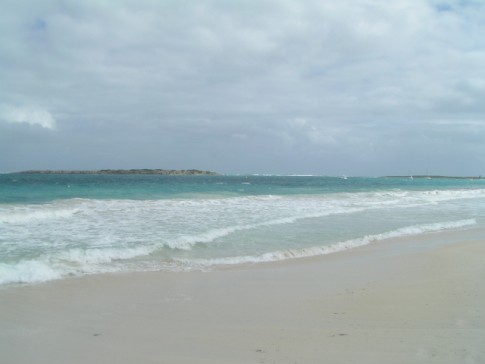 |
Here are a number of pictures of St. Maarten and the places we visited
36 Photos
Created 21 January 2008
|
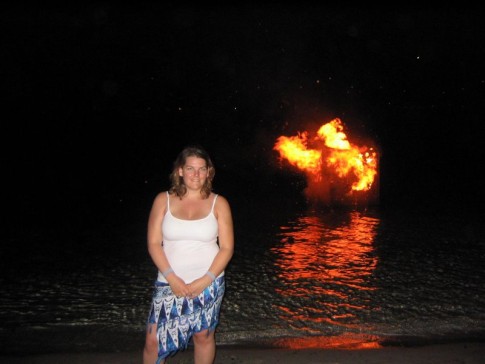 |
Join us as we explore the Spanish, American, and British Virgin Ilsands.
15 Photos
Created 20 October 2007
|
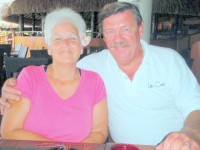
Who: Mary Margaret and Dave Leu
Port: Dana Point, CA
Table of Contents
Favorites
- Get A Copy Of Our Techno Tips Document
- Galley Tips For Cruisers
- Land Travel Tips For Cruisers
- Get A Copy Of Our Yanmar Drive Cone Repair Manual
- Updated Pirate Report
- My Bother Don's and Debbie's Blog
- A Great Sailing Blog
- A remarkable Sail Blog
- Celestial Navigation
- Here is Another Great Sailing Blog
- S/V Totem's Sail Blog
- S/V Infini's Blog Site


